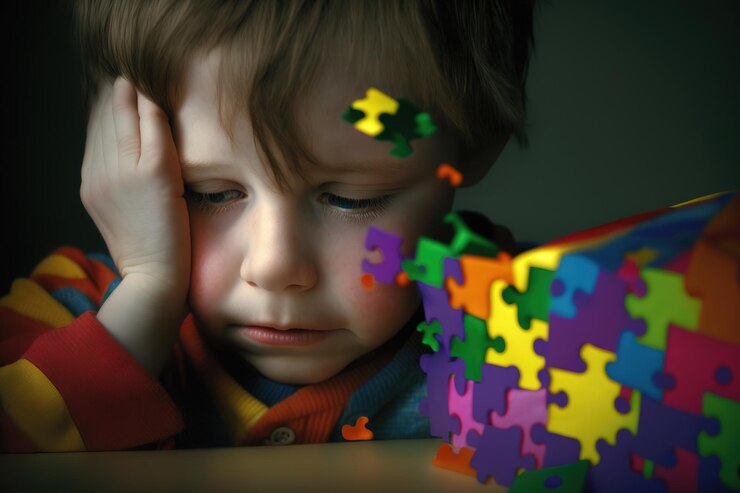Understanding Autism: A Comprehensive Overview
Autism Spectrum Disorder (ASD) is a complex developmental condition that affects individuals in a variety of ways. Characterized by differences in social interaction, communication, and behavior, autism presents a unique set of challenges and strengths. This article delves into the nature of autism, its symptoms, causes, diagnosis, and the various approaches to support and treatment. By gaining a deeper understanding of autism, we can foster a more inclusive and supportive environment for those on the spectrum.

What is Autism Spectrum Disorder?
Autism Spectrum Disorder is a neurodevelopmental disorder that impacts how individuals perceive and interact with the world around them. The term “spectrum” reflects the wide range of symptoms and severity levels that can vary significantly from person to person. According to the DSM-5 (Diagnostic and Statistical Manual of Mental Disorders, Fifth Edition), ASD is characterized by persistent deficits in social communication and interaction, alongside restricted, repetitive patterns of behavior, interests, or activities.
Key Characteristics

Social Communication and Interaction Challenges:
- Difficulty in understanding and engaging in typical social interactions.
- Challenges with interpreting nonverbal cues, such as facial expressions and body language.
- Difficulty in forming and maintaining relationships appropriate to their developmental level.
Repetitive Behaviors and Restricted Interests:
- Engaging in repetitive movements, speech, or use of objects.
- Insistence on sameness, routines, or ritualized patterns of behavior.
- Intense focus on specific, often narrow, interests or activities.


Sensory Sensitivities:
- Over- or under-sensitivity to sensory inputs such as sounds, lights, textures, or tastes.
- Unusual responses to sensory experiences, which can affect daily functioning.
Causes of Autism
The exact cause of autism is not fully understood, but research indicates that a combination of genetic and environmental factors play a role.
Genetic Factors
Genetic Predisposition:
Studies have shown that autism tends to run in families, suggesting a genetic component. Specific genetic mutations and variations have been identified in some individuals with ASD, though no single gene is responsible for the disorder.
Genetic Syndromes:
- Genetic syndromes like Fragile X and Rett syndrome are associated with a heightened risk of autism. These conditions affect brain development and functioning, leading to an increased likelihood of autism spectrum disorder in affected individuals.
Diagnostic Criteria
Developmental Milestones:
Pediatricians and psychologists assess whether a child meets typical developmental milestones. Delays or atypical development in communication, social interaction, or behavior may prompt further evaluation.
Behavioral Assessments:
Standardized tools, such as the Autism Diagnostic Observation Schedule (ADOS) and the Autism Diagnostic Interview-Revised (ADI-R), help assess behaviors and developmental history.
Clinical Evaluation:
A comprehensive evaluation by a team of specialists, including pediatricians, psychologists, and speech and language therapists, ensures an accurate diagnosis and helps rule out other conditions.
Therapeutic Approaches
Behavioral Therapy:
Applied Behavior Analysis (ABA): A widely used approach that focuses on reinforcing desired behaviors and reducing challenging behaviors through structured interventions.
Speech and Language Therapy:
Focuses on enhancing communication skills, such as speech, language comprehension, and social interaction, to improve overall effectiveness in expressing and understanding language.
Occupational Therapy:
Assists individuals in developing daily living skills, including dressing and personal hygiene, while also addressing challenges with sensory processing.
Social Skills Training:
Aims to boost interpersonal skills and help individuals navigate social situations more effectively, improving communication and interaction abilities.
Family Support
Parent Training and Support Groups:
Providing families with resources, training, and emotional support to help them navigate the challenges of raising a child with autism.
Respite Care:
Offering temporary relief for caregivers, allowing them time to rest and recharge.
Community Resources:
Connecting families with local organizations, advocacy groups, and support networks that offer information, resources, and services.
The Importance of Inclusivity
Promoting inclusivity involves understanding and accepting neurodiversity as part of the human experience. It requires:
Awareness and Education: Raising awareness about autism and educating the public to reduce stigma and promote understanding.
Policy and Advocacy: Supporting policies that ensure individuals with autism have access to necessary services, education, and opportunities for participation in community life.
Celebrating Differences: Recognizing and valuing the unique perspectives and contributions of individuals with autism, and creating environments where they can thrive.
Conclusion
Autism Spectrum Disorder is a multifaceted condition that requires a nuanced understanding and approach. By learning more about autism, we can better support individuals on the spectrum and work towards a more inclusive society. Embracing neurodiversity and fostering an environment of acceptance and support can make a significant difference in the lives of those with autism, enabling them to reach their full potential and contribute meaningfully to the world.